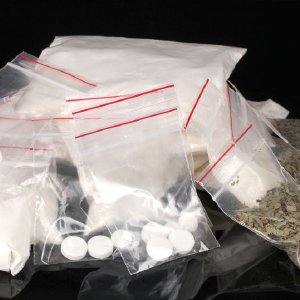New Gravel Drug Raising Concerns Across Country

A dangerous new synthetic drug has appeared on the scene, particularly in the area which includes the states of Ohio, Indiana, Tennessee and Kentucky. Dubbed “gravel” due to its close resemblance to actual gravel, including its gray-white color, the drug combines elements of bath salts, crack cocaine and meth.
Gravel
Gravel is a synthetic type of bath salts, Alpha-PVP (the chemical alpha-Pyrrolidinopentiophenone), and is highly addictive. According to an Ohio 10TV online article, gravel can include a “cocktail” of bath salts, meth—and rat poison.
According to a recent Miami NewsTime News online article, Alpha-PVP acts on the user much like methamphetamine, and has been cited as the cause of number of bizarre drug-user incidents worldwide.
Authorities in the Tri-State area of the Midwest report gravel appears to be shipped into the area by normal means, often disguised as plant fertilizer. According to area police, the drug can be swallowed or injected. Another source reported gravel can be snorted, smoked, or injected.
Side-effects experienced by the gravel user include paranoia, hallucinations, violent behavior and brain damage.
Risks and Concerns
According to Paul Coleman, CEO and president of Maryhaven, Central Ohio’s most comprehensive and oldest healthcare facility which specializes in treatment of addiction, the combining of a number of drugs—none of which are good—results in a mixture “worse than the sum of its parts.”
Coleman adds that some forms of gravel are reported to combine methamphetamines with bath salts, resulting in “a very bad product.” Coleman notes that emergency rooms do not need any more patients, and recommends that a person “run away” from anything they hear called gravel.
Law enforcement tests on the drug showed-up ammonium nitrate (odorless, colorless or white, crystal salt; frequently used in fertilizers), and rat poison used in diluting the drug.
A task force in the state of Tennessee documented two dozen cases to date, and expressed concerns as to the use of gravel spreading—and to where it will spread.
One gravel user in Tennessee identified the drug as “the new crack”, and the crack for his generation.
In addiction to getting the user high, the drug is capable of producing a dangerous “cocktail” of high blood pressure, paranoia—and skin lesions.
Short-term effects of gravel abuse include elevated heart rate, increased blood pressure, hallucinations, violence, paranoia and brain damage, according to an Hawaii Army Weekly article. Also cited is its frequent use in combination with other drugs.
Because gravel is relatively new on the drug-use scene, its long-term effects have yet to be documented. However, there are reports of serious deterioration in the user’s physical appearance resulting from consistent abuse of gravel.
Injecting gravel can result in tissue deterioration in and around the site of injection, reportedly resulting in inches-deep gaping holes in body tissue.
Solutions
Drug prevention education as to what gravel is, and the risks and consequences of using it could go far in helping to prevent the spread of its use. Most individuals would likely reconsider snorting, smoking or injecting a chemical mixture which potentially includes rat poison.
The alarming thing for me is many may see this as something that is a concern outside of Oklahoma I first heard about it from an 8th grader in one of our rural Oklahoma schools during one of my drug education classes. I had no idea what it was and upon hearing about it became very concerned and began my research. We all need to pay closer attention and keep our eyes and ears wide open to what our young people are doing.


